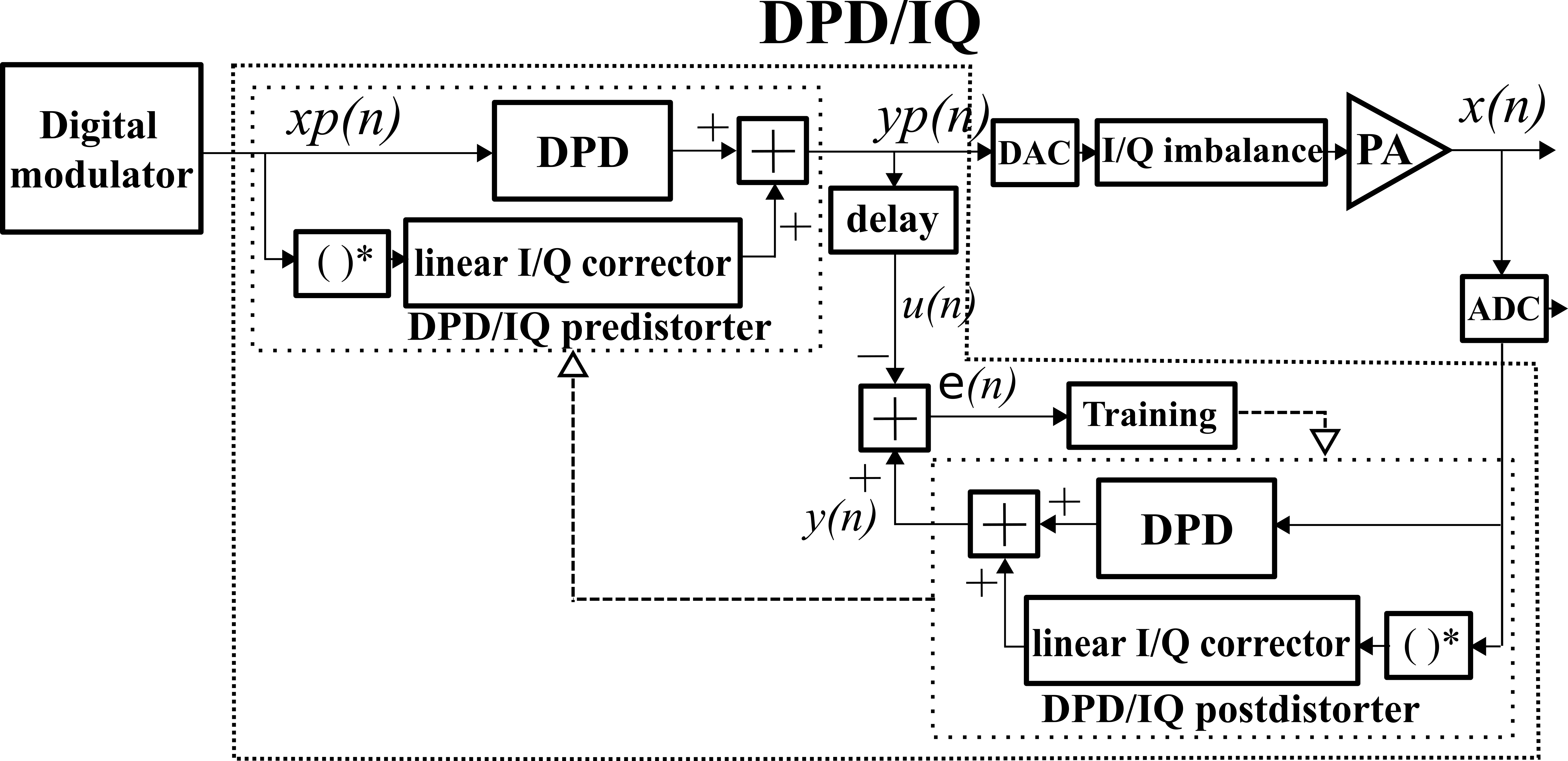LimeADPD I/Q - DPD with I/Q Imbalance Mitigation
Transmitter I/Q imbalance
Complex-valued signal x(t), exposed to the source of frequency-independent I/Q imbalance, results to the signal y(t):
The parameters ε and φ represent the amplitude and phase imbalance terms. For wideband signals, I/Q imbalance manifests frequency-dependent behavior caused by analogue components in I and Q modulator paths.
LimeADPD I/Q method is used for joint PA linearization and RF transmitter I/Q imbalance mitigation. It is designed for implementation in software-defined radio (SDR) base stations (BS).
LimeADPD I/Q Indirect Learning Architecture
The modification of LimeADPD which performs joint PA nonlinearity minimization and I/Q imbalance mitigation is given in Figure 2.
Pre-distorter and post-distorter blocks are divided into Memory Polynomial (MP) based non-conjugate and linear conjugate sub-blocks, as presented in Figure 2. The pre-distorter MP non-conjugate part (named with DPD in the Figure 2) takes at input signal xp(n):
and it is dedicated to minimization of PA and transmitter nonlinearity effects. The linear conjugate part, denoted as I/Q corrector, takes at input the complex-conjugated signal xp*(t):
and is introduced to suppress the effects of transmitter’s I/Q imbalance.

Figure 2: Indirect learning architecture for I/Q image rejection and PA linearization
Complex Valued Memory Polynomial
For a given complex input:
and conjugated complex input signal:
LimeADPD I/Q model produces complex output:
where:
are the polynomial coefficients while e(n) is the squared envelope of the input:
In the above equations, parameter N1represents the DPD memory length and M1is the nonlinearity order. The I/Q corrector block is modeled by linear FIR filter block with length N2.
The advantage of LimeADPD I/Q is low complexity in terms of reduced number of complex valued coefficients.
LimeADPD I/Q Equations
Based on discussions given in previous sections and using signal notations of Figure 2, the ADPD I/Q pre-distorter implements the following equations:
while the post-distorter does similar:
Note that the pre-distorter and post-distorter share the same set of complex coefficients g and h. Delay line is given by:
LimeADPD I/Q Training Algorithm
The LimeADPD I/Q training algorithm alters complex valued memory polynomial coefficients in order to minimize the difference between PA input yp(n) and y(n). The instantaneous error shown is calculated as:
Training is based on minimising Recursive Least Square E(n) error:
by solving linear system of equations:
Following RLS algorithm, after every training step, the system of equations is solved. Lime ADPD I/Q involves LU decomposition for equation solving method.